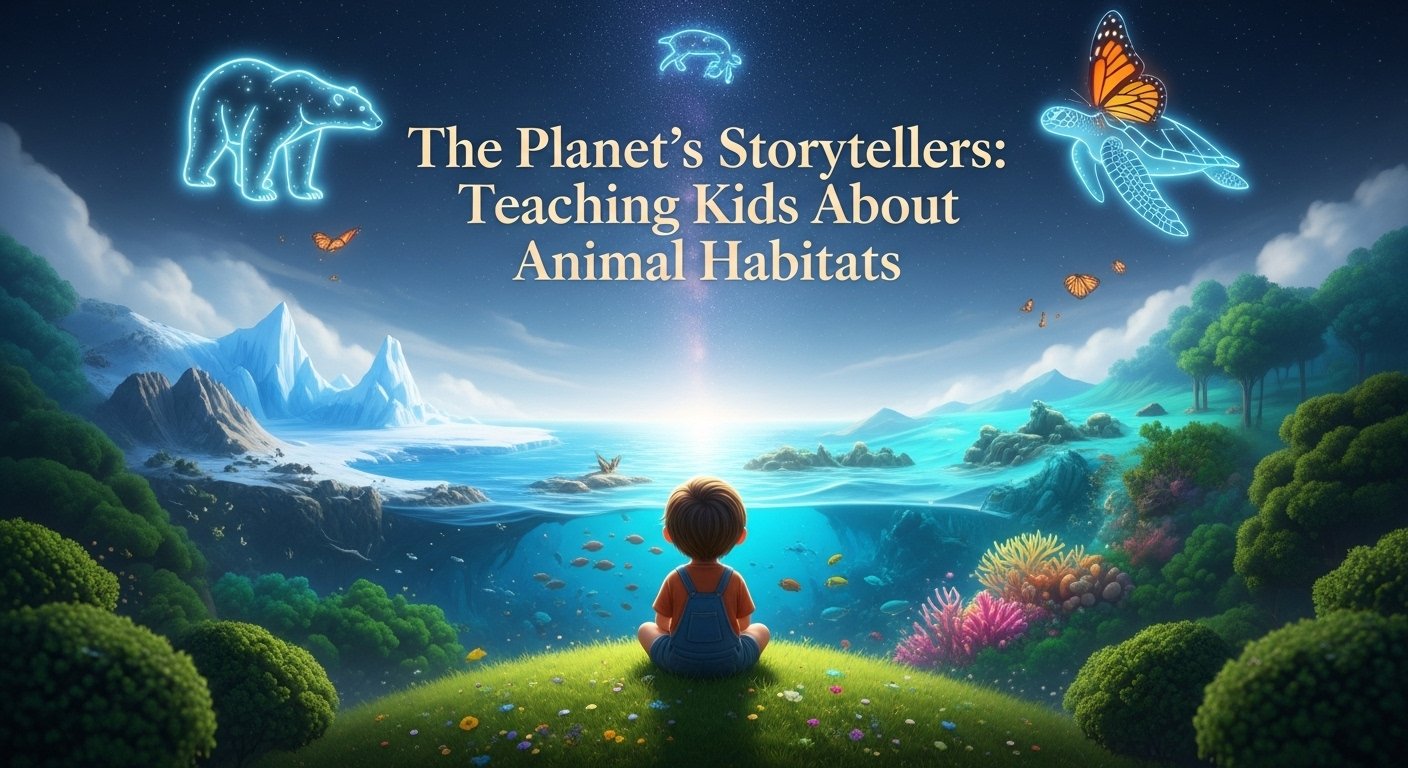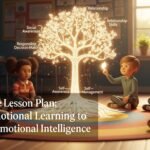The Planet’s Storytellers: How to Teach Kids About Animal Habitats in a Changing World
When I was about eight years old, my grandfather showed me a monarch butterfly resting on a milkweed plant in his backyard. He told me that this tiny, fragile creature had flown thousands of miles, a silent traveler on an ancient migratory path. For me, that butterfly wasn’t just an insect; it was a living, breathing miracle. Today, when I see a monarch, it feels like a rare and special encounter, and I wonder: will my own children be able to see this same miracle? This quiet question is at the heart of one of the most important challenges we face as parents and educators: how do we talk to young learners about the impact of climate change on animal habitats? The answer lies in a thoughtful, hopeful, and empowering approach to climate change education.
Talking about climate change can feel like walking a tightrope. On one side, there’s the risk of overwhelming children with scary, abstract facts that lead to anxiety. On the other, there’s the danger of sugarcoating the truth, failing to instill the urgency needed for action. Effective climate change education finds its balance on that rope. It’s not about reciting lists of endangered species or showing images of devastation. It’s about cultivating a deep love for the natural world first, then providing the knowledge and tools to protect it. It’s about turning fear into fascination and anxiety into agency.
How to Start Online Tutoring in 2025 — Earn from Home
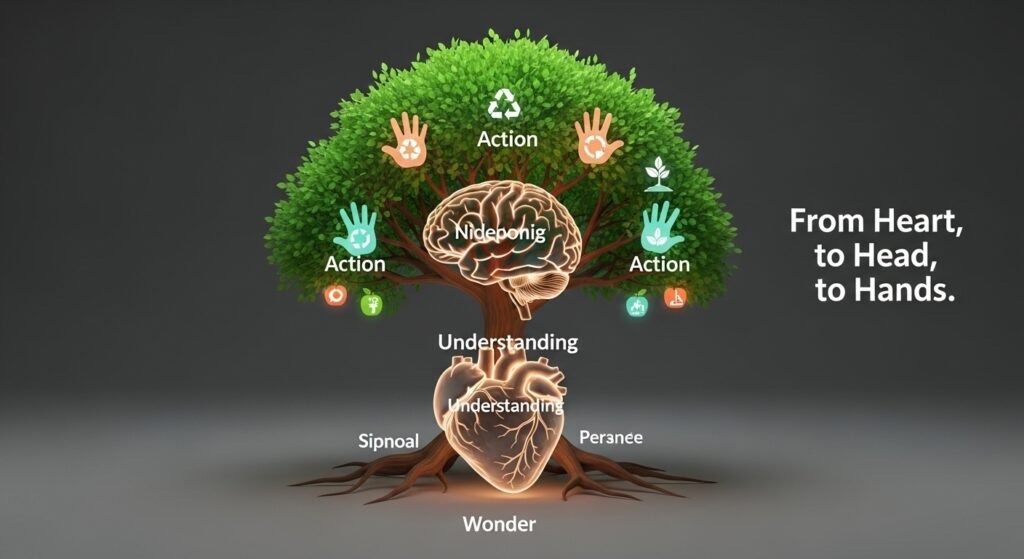
Why We Must Rethink Climate Change Education
The term “climate change” often conjures images of complex charts, political debates, and distant, melting glaciers. For a young learner, these concepts are not just abstract; they can be terrifying. Studies have increasingly shown that “eco-anxiety” is a real and growing phenomenon among children and teens. A fear-based approach, while well-intentioned, can cause children to feel helpless and disengage entirely.
The goal of climate change education, especially for younger students, shouldn’t be to create a generation of worriers, but to raise a generation of stewards. Stewardship begins with connection. It’s an emotional bond forged through positive, wondrous experiences with nature. No child will fight to protect a statistic, but they will fight to protect the forest they played in, the birds they watched, and the monarch butterfly they learned was on a heroic journey.
This is why our approach must be rooted in a journey that travels from the heart, to the head, and finally, to the hands.
- Start with the Heart: Foster wonder and empathy.
- Move to the Head: Build understanding with age-appropriate science.
- Empower the Hands: Encourage tangible, hopeful action.
This framework transforms climate change education from a daunting lesson into an inspiring adventure of discovery and empowerment.
Best Remote Internship Programs in 2025
A Journey Through Changing Homes: Case Studies for the Classroom
To bring the impact of climate change on habitats to life, we need to tell stories. The stories of the animals themselves are the most powerful tool we have. By focusing on specific case studies, we can make a global issue feel personal and understandable.
The Arctic: A Polar Bear’s Shrinking World
The polar bear is the iconic symbol of a changing climate, but we need to move beyond the sad images and into their story.
- The Science, Simplified: Explain that the Arctic is like the Earth’s air conditioner, and it’s getting warmer. The sea ice is like a giant, floating dinner plate for polar bears. It’s the platform they use to hunt for seals, their primary food source. As the planet warms, this “dinner plate” is melting earlier in the spring and freezing later in the fall.
- The Animal’s Perspective: Ask engaging questions. “Imagine if the floor of your kitchen started disappearing for a longer time each year. How would you get to the refrigerator?” This simple analogy helps a child understand the polar bear’s challenge. It’s not just about the heat; it’s about hunger and the loss of a home.
- Connect with Resources: Use incredible footage from documentaries like BBC’s Frozen Planet to show the beauty and fragility of this habitat. Explore resources from organizations like Polar Bears International, which are dedicated to their conservation.
Best Remote Internship Programs in 2025
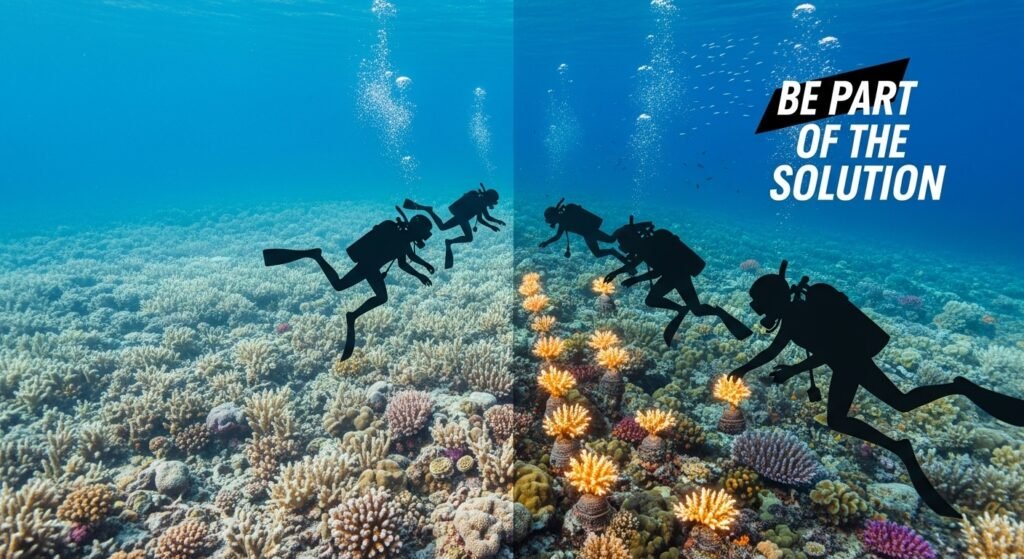
Coral Reefs: When a Rainbow Forest Loses its Color
Often called the “rainforests of the sea,” coral reefs are teeming with life. But they are also incredibly sensitive to change.
- The Science, Simplified: Describe corals not as rocks, but as tiny living animals that build huge underwater cities. These corals have tiny plant-like partners called algae living inside them, which give them their beautiful colors and most of their food. When the ocean water gets too warm for too long, the corals get stressed and ask the algae to leave. This is called “coral bleaching,” and it’s like the coral getting a terrible fever and losing its color.
- The Animal’s Perspective: The reef isn’t just home to the coral; it’s a bustling neighborhood for thousands of fish, crabs, and other sea creatures. A bleached reef is like a ghost town. Ask students, “What happens to all the families in a city if all the houses and grocery stores suddenly disappeared?” This helps them grasp the cascading effect on the entire ecosystem.
- Connect with Resources: The NOAA Coral Reef Conservation Program has a wealth of educational materials, including stunning visuals that show both healthy and bleached reefs. Virtual reef dives on YouTube can also be a powerful, immersive tool.
The Local Forest: A Bird’s Confused Calendar
You don’t have to travel to the Arctic to see the effects of climate change. They are happening in our own backyards, affecting the birds we see every day.
- The Science, Simplified: Explain that birds have an internal calendar that tells them when to migrate, when to build nests, and when to have their babies. This calendar is synchronized with the seasons, especially the arrival of their food, like insects and caterpillars. As the climate warms, spring is arriving earlier. The plants bloom sooner, and the insects hatch sooner.
- The Animal’s Perspective: Some birds are arriving at their summer homes at the usual time, only to find they’ve “missed the party.” Their main food source has already come and gone. This is a “phenological mismatch.” Frame it as a story: “Imagine you have a ticket to a big concert, but your watch is running slow. You show up an hour late, and the band has already finished playing. What would you do?”
- Connect with Resources: This is a perfect opportunity for hands-on climate change education. Projects like The Great Backyard Bird Count by the Cornell Lab of Ornithology and Audubon Society empower students to become citizen scientists, contributing real data to track the health of local bird populations.
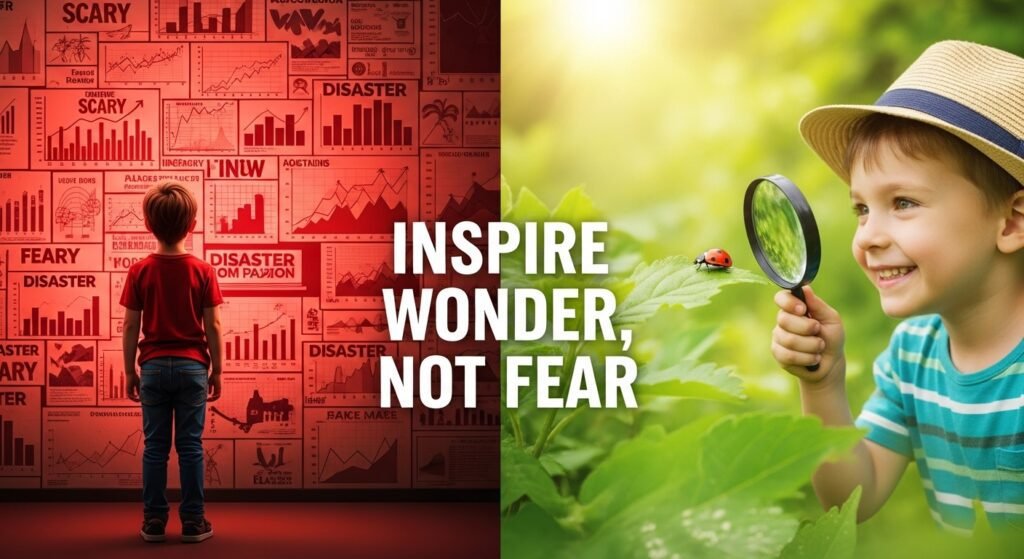
The Educator’s Toolkit: The Do’s and Don’ts of Climate Change Education
How we frame the conversation is just as important as the information we present. The goal is to inspire a generation of changemakers, not to paralyze them with fear.
| The “Don’ts” (Fear-Based Approach) | The “Do’s” (Empowerment-Based Approach) |
| Overloading with scary statistics and worst-case scenarios. | Focusing on storytelling and the perspective of a single animal to build empathy. |
| Focusing only on the disaster. Gloomy narratives can lead to feelings of helplessness. | Celebrating conservation wins and solutions. Highlight stories of habitats being restored and species making a comeback. |
| Inducing guilt or blame. Making children feel personally responsible for a global problem is counterproductive. | Focusing on positive, tangible actions. Frame it as being part of a team of “planet helpers.” |
| Presenting the problem as impossibly large. | Connecting to local, observable issues. Start with the school garden or a local park to make the concepts feel real and manageable. |
| Ending the lesson on a note of doom. | Always ending on a note of hope and agency. What is one small thing we can do today? |
Export to Sheets
This empowerment-based approach is the cornerstone of effective climate change education. It builds resilience, fosters creativity, and ensures that learning about our planet’s challenges is an inspiring call to action.
Best Remote Internship Programs in 2025
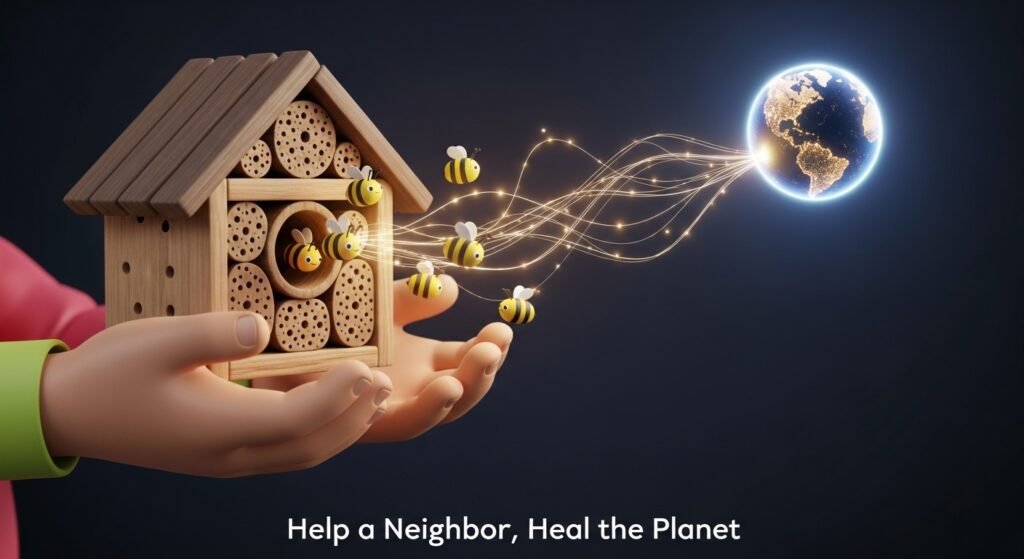
From Classroom to Community: Empowering the Hands
The final, crucial step is to move from learning to doing. Providing young people with opportunities to make a tangible, positive impact gives them a powerful sense of agency. It proves to them that their actions matter.
- Become Citizen Scientists: Engage the class in projects where they can contribute real data. Tracking local wildlife with the iNaturalist app, monitoring water quality in a local stream, or participating in a bird count makes science a hands-on adventure.
- Create a Habitat: The most direct way to help is to build a home for animals. This could be a school-wide project to plant a pollinator garden with native flowers for bees and butterflies. It could be as simple as building a “bee hotel” or setting up a bird feeder and bath.
- Launch a “Planet Helpers” Campaign: Brainstorm a school-based campaign focused on a single, achievable goal. This could be a “Waste-Free Lunch” challenge, a campaign to reduce the school’s energy use, or a fundraiser for a local conservation organization.
- Connect with Experts: Invite a local wildlife biologist, a park ranger, or a master gardener to speak to the class. Hearing from real-life “planet helpers” can be incredibly inspiring and makes conservation careers feel attainable.
These hands-on activities are a vital part of climate change education, as they bridge the gap between knowing there’s a problem and feeling empowered to be part of the solution.
Conclusion: Raising a Generation of Hopeful Stewards
Teaching our children about the impact of climate change on animal habitats is one of our most solemn responsibilities, but it is also one of our greatest opportunities. It’s an opportunity to nurture a generation that is not defined by climate anxiety, but by its deep, abiding connection to the natural world.
By starting with the heart to foster wonder, moving to the head to build understanding, and empowering the hands through meaningful action, we can guide them through this complex topic with honesty and hope. We can teach them that while the challenges are great, so is their capacity for creativity, compassion, and change. The story of our planet’s future is still being written, and through effective climate change education, we can equip our children to be its most inspiring and hopeful authors.
What is one simple way you could help a young learner connect with a local animal habitat this week? Share your beautiful ideas in the comments below!

